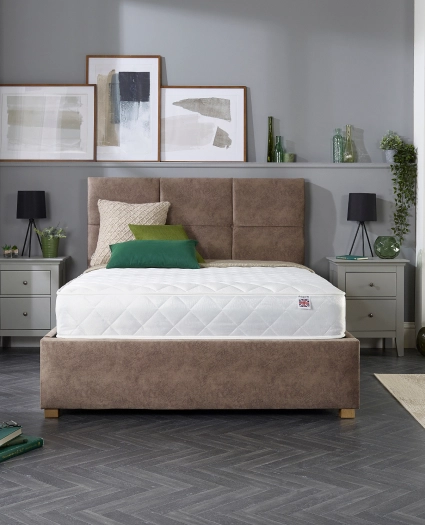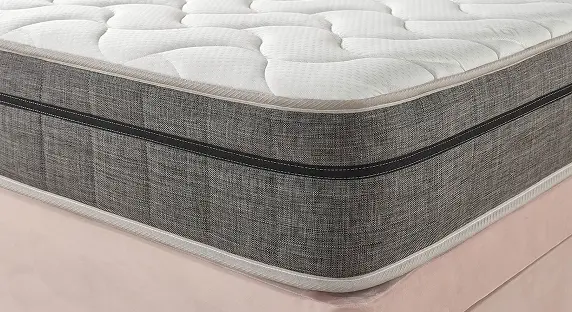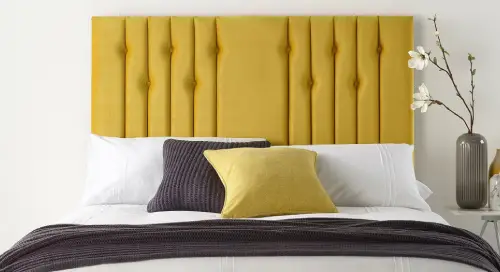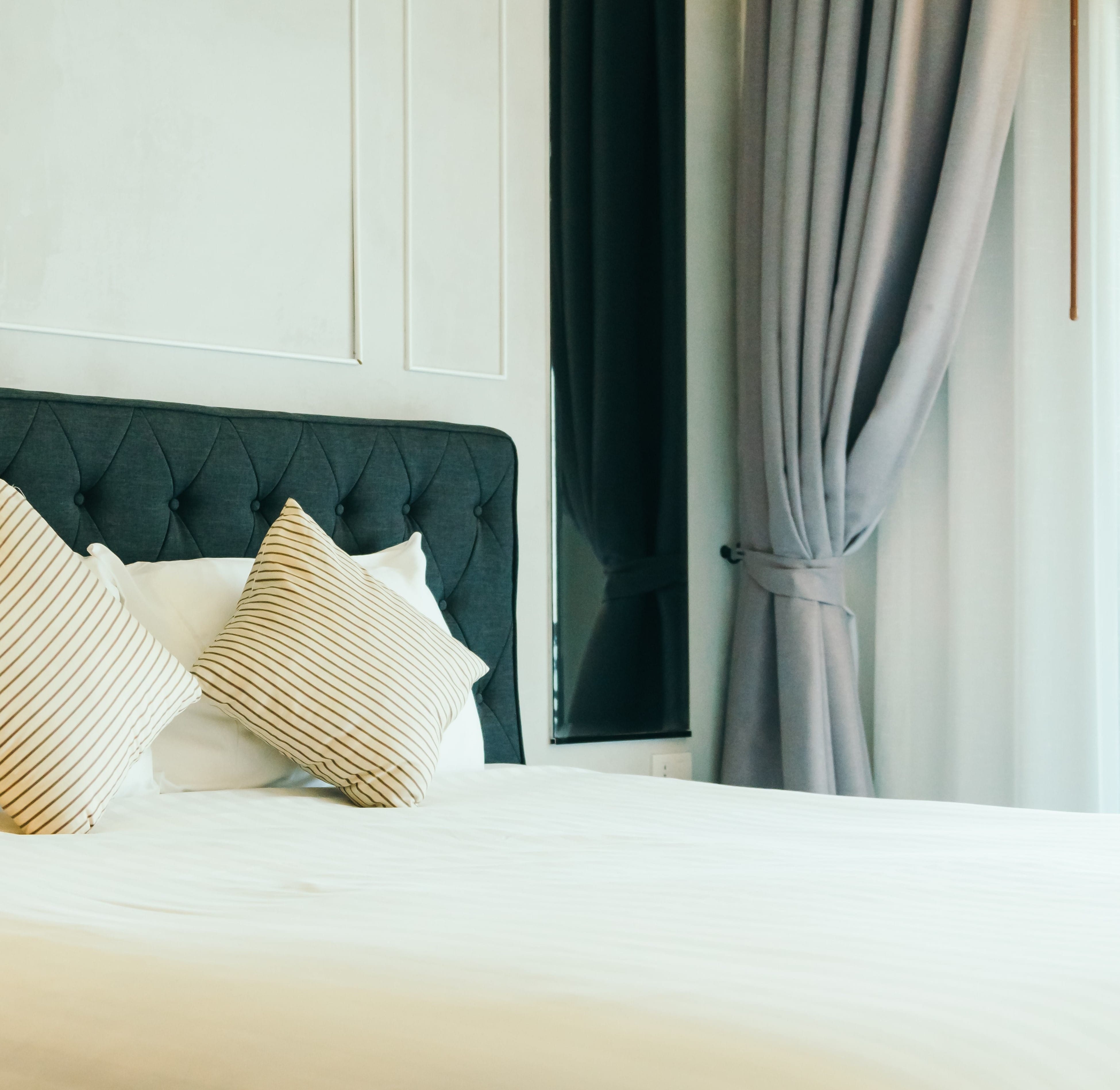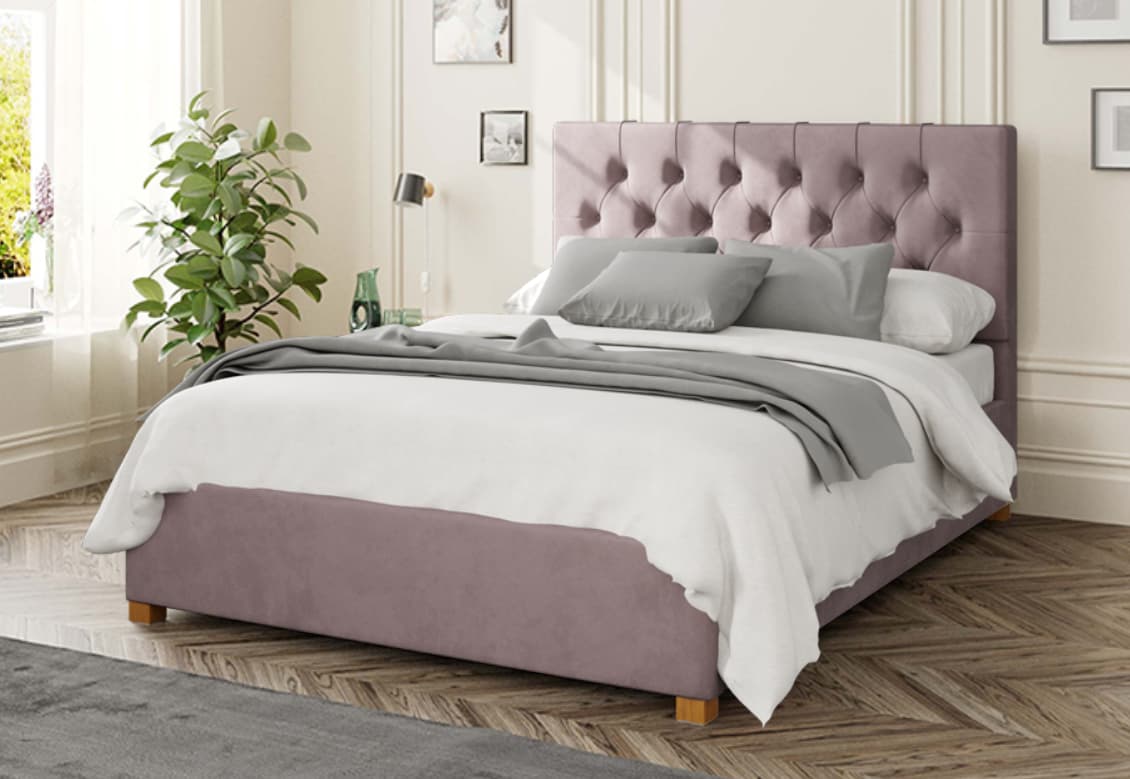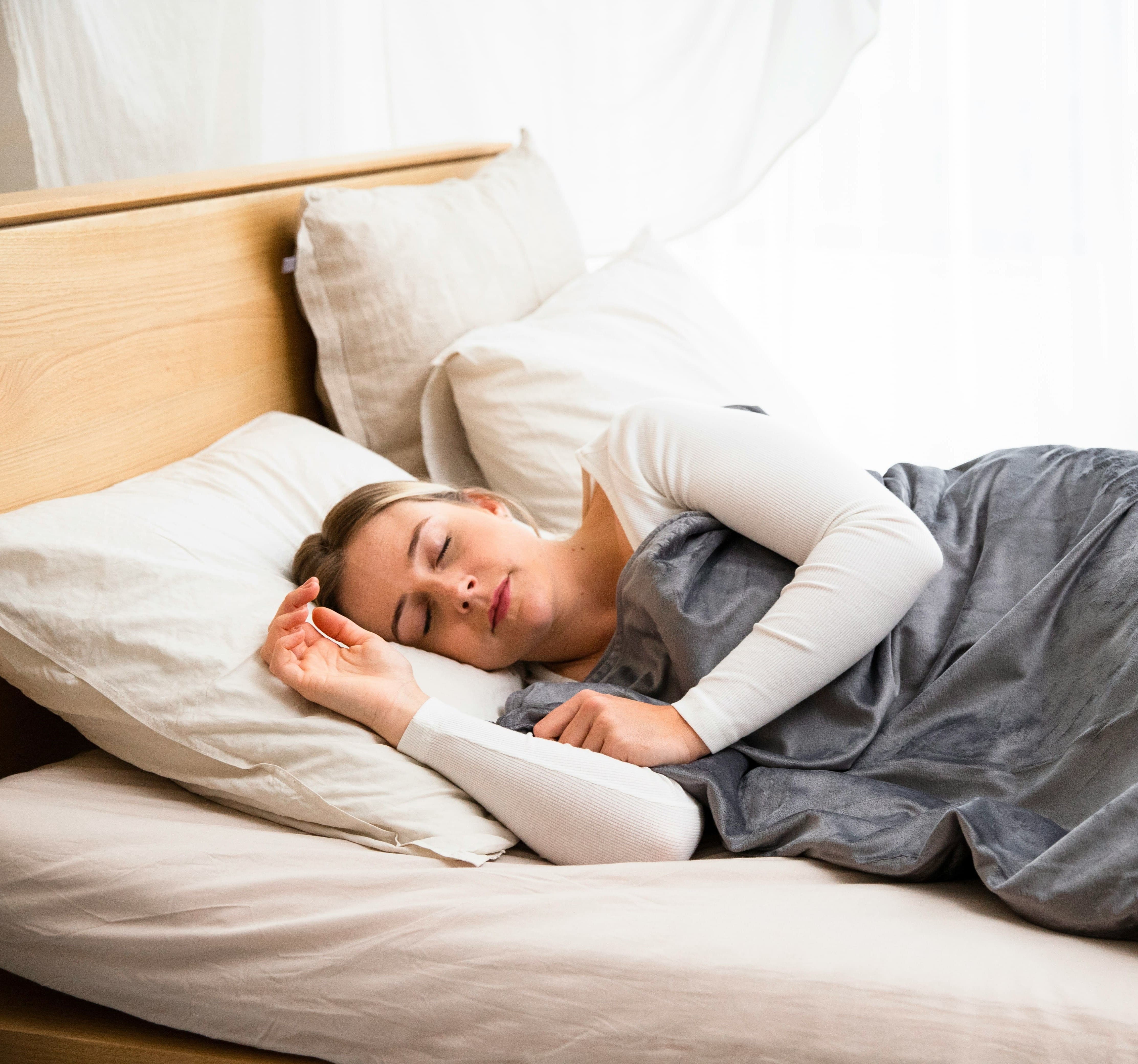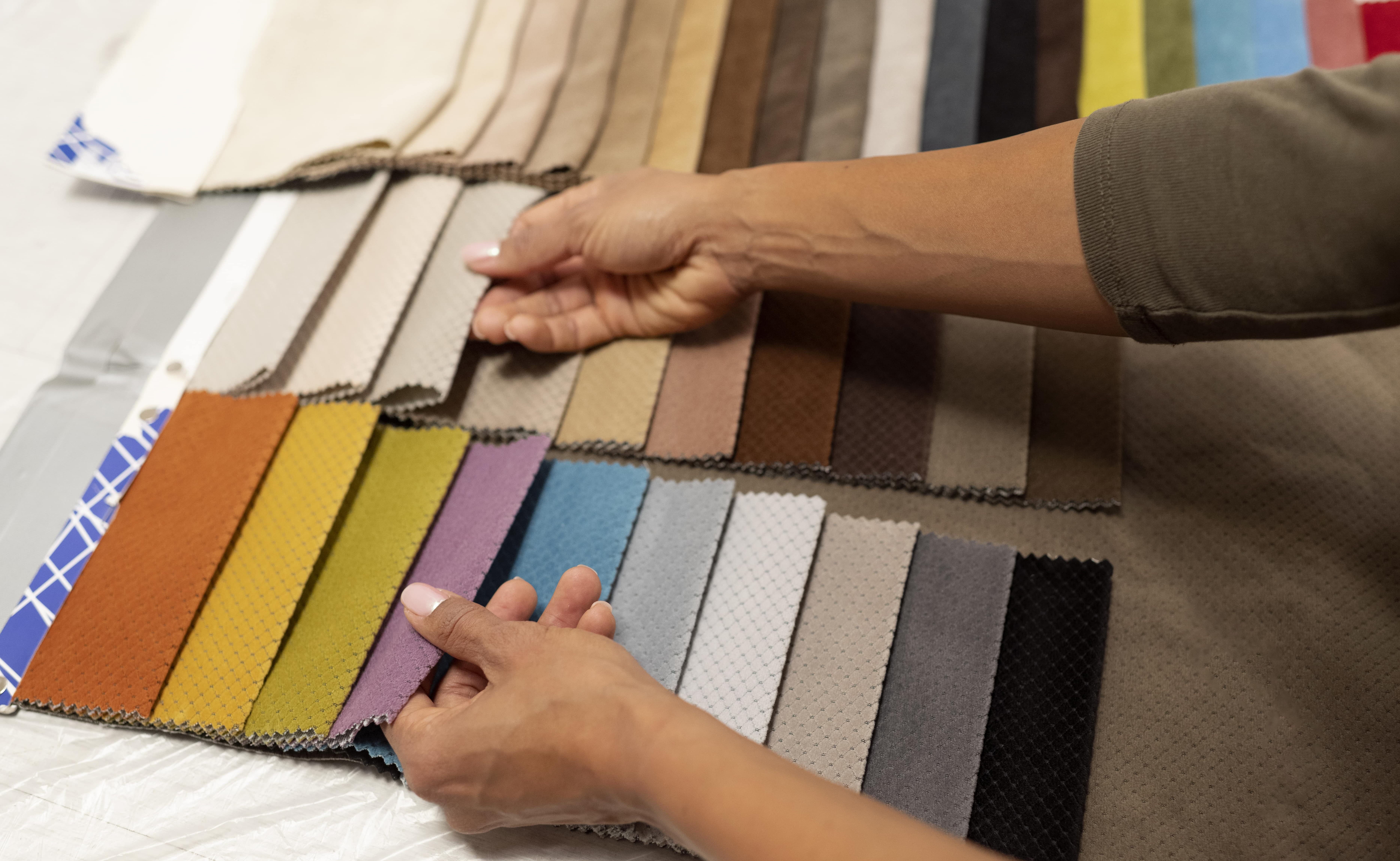Choosing the right bed isn’t just about creating a stylish bedroom—it’s about improving your quality of life. A good bed supports your body, enhances your sleep, and helps you wake up feeling refreshed and ready to take on the day. With so many options available, it can feel overwhelming to find the right fit for your sleep needs, but the right bed makes all the difference.
Whether you’re struggling to find comfort, space, or support, this guide will walk you through everything you need to know about choosing the perfect bed for your lifestyle.
Why Choosing the Right Bed Matters More Than You Think
The Impact of Sleep on Your Overall Health
When it comes to health and well-being, we often think of things like eating better, exercising more, or taking time to relax. But what if I told you that one of the most important things you could do for your physical, mental, and emotional health is simply choosing the right bed? It sounds almost too simple, doesn’t it? Yet the quality of your sleep, which is heavily influenced by the bed you’re resting on every night, has a ripple effect on just about every aspect of your life.
We’ve all been there—those nights where you toss and turn, struggling to find a comfortable position. Maybe you wake up every hour, or perhaps you finally manage to drift off only to wake up feeling like you’ve been run over by a truck. If this sounds all too familiar, it’s worth asking yourself: could it be my bed that’s sabotaging my sleep?
Sleep isn’t just about getting a certain number of hours. It’s about the quality of that sleep. According to the NHS, adults should aim for 7 to 9 hours of sleep per night, but those hours won’t do you much good if you’re not truly resting. The wrong bed—whether it's too hard, too soft, or simply too old—can leave you waking up more tired than when you went to bed.
When you don’t sleep well, it’s not just your energy levels that take a hit. Your mood can plummet, leaving you feeling irritable, stressed, or even anxious. Lack of sleep can make it harder to concentrate, zap your motivation, and leave you feeling mentally sluggish throughout the day. Physically, poor sleep is linked to an increased risk of conditions like heart disease, diabetes, and obesity. Emotionally, it can leave you feeling drained, making it harder to cope with everyday stresses. It’s no wonder that sleep experts and the NHS are reminding us just how vital a good night’s rest is for every part of our lives.
How Your Mattress Affects Sleep Quality
We all know how it feels to wake up after a night of bad sleep—groggy, stiff, maybe even a bit cranky. But what we often don’t realise is how much of that poor rest could be down to the mattress we’re sleeping on. It’s easy to blame the stress of the day, a late-night Netflix binge, or even too much coffee, but if your mattress is working against you, even eight hours of sleep can feel like three.
Your mattress is the foundation of your sleep. If it’s too soft, you might find yourself sinking in too much, causing your spine to misalign and putting strain on your muscles and joints. On the flip side, if it’s too firm, you might wake up with aching shoulders, hips, and lower back because your body’s pressure points aren’t being cushioned enough.
This is why finding the right level of firmness is crucial. There’s no one-size-fits-all when it comes to mattresses—it’s about what works for your body.
Side sleepers, for example, usually need a softer mattress that cushions the shoulders and hips, while back and stomach sleepers often do better with something a bit firmer to keep their spine properly aligned. And it’s not just about firmness—mattress materials matter too. Memory foam, for instance, moulds to your body and reduces pressure points, while pocket-sprung mattresses provide targeted support by responding individually to your body’s weight.
If you wake up with pain or constantly toss and turn to get comfortable, it might be time to rethink your mattress. You don’t need to wait until your mattress looks worn out—if you’re not sleeping well, that’s a sign enough that it might be time to consider an upgrade.
Signs It’s Time to Replace Your Bed
We all hold onto things a little longer than we should—whether it’s an old pair of jeans or a worn-out couch, it’s easy to overlook when something’s past its prime. But your bed? That’s one thing you don’t want to keep around too long if it’s no longer doing its job.
The general rule is that mattresses should be replaced every 7 to 10 years, but how can you really tell if it’s time for yours to go? First, check for physical signs: does your mattress sag in the middle? Can you feel lumps, dips, or even springs poking through when you lie down? These are clear indicators that your mattress isn’t providing the support it once did.
But it’s not just about what you can see—it’s also about how you feel. Do you wake up with aches and pains, especially in your lower back, neck, or shoulders? Are you tossing and turning throughout the night trying to find a comfortable position? Or maybe you’ve just started waking up feeling unusually tired, even though you’re technically getting enough sleep. If any of this sounds familiar, your mattress might be the culprit.
Another thing to consider is whether your sleep needs have changed. As we get older or our health changes, what once felt comfortable may no longer be supportive enough. If you’ve gained or lost weight, are experiencing back problems, or even if your sleeping partner has different needs, it might be time to reassess what kind of bed would work best for both of you.
Lastly, don’t ignore the little clues. If you’re waking up sneezing, coughing, or with irritated skin, it might be due to dust mites or allergens that have built up in your mattress over time. Even if you clean your bed regularly, mattresses naturally accumulate allergens that can affect your sleep quality.
So, if you’re feeling any of these warning signs, don’t wait. Investing in a new mattress may seem like a big expense, but considering that you spend a third of your life in bed, it’s one of the best investments you can make for your health and well-being.
What Are the Different Types of Bed Frames?
While it’s easy to get swept up in choosing a bed frame that looks gorgeous—whether that’s a sleek metal design or a plush, upholstered headboard—it’s important to remember that a bed frame is more than just a style statement. Yes, the way your bed looks is important, but how it supports your sleep is even more crucial.
Wooden Bed Frames
Wooden bed frames, for instance, offer that sturdy, timeless look. They’re solid and dependable, like a good old oak table that’s been in the family for generations. If you’re someone who likes their bed to have a bit of character, wood is a great option—it can be traditional or contemporary, depending on the finish. Plus, our wooden beds come with a stylish footboard, really tying up the timeless look wooden beds offer.
Upholstered Bed Frames
Now, if you’re after something with a bit more flair, an upholstered bed frame could be just the thing. Upholstered beds are all about luxury, with fabric-covered frames that make your bedroom feel like a hotel suite. You can choose from soft velvets, linens, or leathers, adding a touch of elegance and softness to your sleeping space. They’re perfect if you like to sit up in bed to read or watch TV, as the padded headboard offers a comfy place to rest your back. But bear in mind, upholstered frames can require a little extra care—fabric can stain, and dust can accumulate, so they might not be the best option if you’ve got pets who like to snuggle up on the bed.
Ottoman Bed Frames
Ottoman bed frames are an excellent choice for anyone looking to combine style with practical storage solutions in their bedroom. These unique frames feature a convenient storage compartment beneath the mattress, which you can easily access by lifting the bed's top. This feature is particularly beneficial for those with limited space, as it allows you to store bedding, clothes, or other items out of sight, helping keep your room tidy and organized. With the rise of minimalist living, ottoman beds have become increasingly popular, proving that you can have both a beautiful and functional bedroom.
Divan Bed Frames
Divan bed frames are a fantastic option for anyone seeking to blend style with practical storage solutions in their bedroom. These unique frames come with a handy storage compartment hidden beneath the mattress, which you can easily access by lifting the top of the bed. This feature is especially useful for those working with limited space, as it allows you to tuck away bedding, clothes, or other items out of sight, keeping your room neat and organized. As minimalist living becomes more popular, divan beds are gaining traction for their ability to offer both beauty and functionality, proving that you don’t have to compromise on aesthetics for practicality in your bedroom.
Finding The Perfect Bed Size
When it comes to finding the perfect bed, size is definitely something that matters. It’s not just about fitting your bed into your room—it’s about making sure you’re comfortable and have enough space to sleep without feeling cramped or tangled up like a pretzel. Whether you’re sharing your bed with a partner, sleeping solo, or even making room for a pet (or two), choosing the right size can make all the difference between a restful night’s sleep and a constant battle for space.
Single Beds
Let’s start with the single bed, which measures 90cm wide by 190cm long. It’s perfect for kids, teenagers, or if you’ve got a small guest room that needs a practical solution. However, if you’re an adult and you like to stretch out in your sleep, you might find a single bed just a bit too restrictive. You know that feeling when you wake up and half of you is hanging off the edge? Yeah, no one enjoys that.
Small Double Beds
Next, we have the Small Double Bed (also known as a queen-size), which measures 120 cm by 190 cm. This is a brilliant option for solo sleepers who want more space than a single offers but don't have the room for a full double. It's also a great choice for small apartments or guest rooms where a bigger bed might overwhelm the space.
Stylish small double beds often feature built-in storage or a low-profile design to maximise floor space. If you’re tight on space but still want a bit of luxury, this size can be the sweet spot.
Double Beds
Next up is the double bed, which measures 135cm by 190cm. For solo sleepers, this is usually the sweet spot—plenty of room to roll around without taking up the entire room. But for couples? Well, let’s just say it might start to feel a bit tight, especially if one of you has a habit of spreading out like a starfish.
Sure, you can make it work, but if you’ve ever found yourself in a duvet tug-of-war, you’ll know that a double bed can feel quite cosy—sometimes too cosy.
King Size Bed
For couples, or those who just like a bit more personal space, there’s the king-size bed, which measures 150cm wide by 200cm long. This is where you start to feel the luxury of space. No more fighting for the middle ground, no more accidental kicks in the night. A king-size gives you room to breathe, move, and actually get some decent sleep, whether you’re sharing the bed or sleeping solo. And if you’re a taller person, that extra 10 cm in length can make a huge difference when it comes to avoiding the dreaded “feet hanging off the edge” scenario.
Super King Size Bed
Finally, for those who want all the space, there’s the super king-size bed. This beast of a bed measures 180 cm wide by 200cm long, and it’s the ultimate choice for anyone who really values their sleep space. If you’re a couple who loves to spread out or maybe you have little ones who occasionally climb into bed in the middle of the night (or let’s face it, the dog takes up more space than both of you), a super king-size is the way to go. It’s like having your own little island of sleep, where everyone can get comfortable without disturbing anyone else.
In the end, whether you’re sleeping solo, snuggling up with a partner, or sharing your bed with kids, the right size bed can transform your sleep. Think of it this way: your bed is where you spend nearly a third of your life, so make sure it’s a place where you can stretch out, get comfortable, and sleep soundly, without feeling like you’re competing for space every night!
Choosing Your Bed Based on Your Sleep Position
When it comes to picking the perfect mattress, one of the most important things to consider is how you sleep. Believe it or not, your go-to sleeping position says a lot about the type of mattress that will work best for you. Whether you’re the kind of person who curls up on their side like a hedgehog, sprawls out on their stomach like a beachgoer soaking in the sun, or lies flat on your back as if you're on a yoga mat, each position puts different demands on your bed.
Side Sleepers
Let’s start with side sleepers, which is one of the most common positions. If you’re the type who curls up on your side, tucking your knees in and maybe hugging a pillow, then you’ll know how much pressure goes straight to your shoulders and hips. The last thing you want is to wake up with sore joints because your mattress is too firm.
Side sleepers generally benefit from a softer mattress, one that gently cushions those pressure points, allowing your body to sink just enough so your spine stays aligned. Imagine a mattress that feels like it's hugging you, taking the weight off those key areas while still providing support underneath—perfect for avoiding those morning aches and pains.
Back Sleepers
Then there are the back sleepers—you folks who lie flat with your arms at your side or resting on your stomach. If this is how you sleep, your mattress needs to keep your spine in a natural, neutral position without letting your lower back sag. A medium-firm mattress is your best bet here. It’s firm enough to support the natural curve of your back, but not so hard that you feel like you’re sleeping on a wooden board.
The idea is to give your body the support it needs while making sure it’s comfortable enough for you to drift off into a restful sleep. Think of it as finding that sweet spot between softness and support, where your body feels both cradled and properly aligned.
Stomach Sleepers
Now, for the stomach sleepers, things get a little tricky. Sleeping on your stomach isn’t the most spine-friendly position, but if it’s how you naturally sleep, you’ll need a firm mattress to stop your body from sinking too deeply, especially around the hips and lower back. The last thing you want is to feel like you’re in a hammock, with your middle sagging down and your back in an awkward arch all night. A firm, supportive mattress keeps everything in line, so your spine doesn’t suffer during those hours on your stomach. Think of it as a solid, supportive base that holds your body in a straight line from head to toe.
No matter your sleeping position, the right mattress can make all the difference between a peaceful night’s sleep and a restless one. Whether you’re curling up, lying flat, or stretching out, matching your mattress to the way you sleep ensures that your body gets the rest it needs without the aches and pains that come from sleeping on the wrong surface. So, the next time you wake up feeling stiff, it might be worth considering whether your mattress is suited to the way you sleep.
Choosing a Bed for Different Body Types
When it comes to finding the perfect bed, it’s not just about how you sleep, but also who you are—physically. Your weight and height play a big role in determining the level of support and comfort you’ll need from your mattress. After all, no two bodies are the same, and what feels like a cloud to one person might feel like a plank of wood to another.
For Those On The Lighter Side
If you’re on the lighter side, you might find that a firmer mattress just doesn’t work for you. In fact, it could feel like you’re sleeping on a board! That’s because a lighter body weight doesn’t sink as deeply into the mattress, so you end up lying on top of it rather than being cradled by it. A softer mattress, on the other hand, will give you a bit more of that “sink-in” comfort, moulding to your body just enough to provide support where it’s needed without feeling too hard. If you’re lightweight, look for something with a bit of give—a mattress that’s soft but still supportive.
Best Beds For Heavier People
For those on the heavier side, a firmer mattress is your best friend. It’s all about ensuring that the mattress supports your weight without letting you sink in too far, which can throw your spine out of alignment and leave you waking up with all sorts of aches and pains. Firmer mattresses are designed to offer more robust support, meaning they keep your body in a more stable position throughout the night. Hybrid mattresses, which combine foam with pocket springs, can be a great option here—they give you that mix of comfort and support without letting you sink too deep.
For Those Over 6ft Tall
And let’s not forget about height. If you’re taller—over 6ft, for example—bed size becomes just as important as the mattress itself. The last thing you want is to spend your nights with your feet hanging off the end of the bed, feeling cramped. Luckily, there are plenty of options in the UK for taller sleepers. While a standard double (135cm by 190cm) might feel too short, king-size (150cm by 200cm) and super king-size (180cm by 200cm) beds give you that extra length to stretch out comfortably.
At the end of the day, it’s about finding a mattress and bed size that suit both your body type and your personal preferences. Whether you need something soft, firm, long, or spacious, there’s a bed out there that can give you the support and comfort you need for a great night’s sleep. And let’s face it—if you’re going to spend a third of your life in bed, you might as well make sure it’s the right one!
Beds for Couples: Sleep Peacefully Together
Sharing a bed with your partner can be one of life’s little joys, but it can also be a bit of a challenge, especially when your sleep preferences don’t quite match up. Whether it’s one of you tossing and turning or fighting over who gets more duvet, finding the perfect bed that works for both of you is key to getting a good night’s sleep—without the midnight elbow jabs!
The Best Bed Size For Couples
First things first, size really does matter when it comes to couples. If you’ve ever found yourselves battling for space in a double bed, you’re not alone. Moving up to a king-size or super king-size bed can make all the difference. It’s like giving each of you your own little island of comfort, meaning no more arguing over the duvet—with a bigger bed, there’s space for everyone. Plus, having that extra room to stretch out means you’re less likely to disturb each other throughout the night. So, if you can, always go bigger. You’ll both thank yourselves in the morning.
The Best Mattress For Couples
Choosing the right mattress is just as important as the size of the bed, especially if you and your partner have different sleeping habits. The key here is to minimise motion transfer—because no one wants to be woken up by their partner’s midnight trips to the kitchen!
Pocket sprung mattresses are often the best bet for couples because the individual springs move independently, meaning you won’t feel your partner’s every toss and turn. Memory foam is another great option since it absorbs movement and contours to each of you individually. If one of you prefers a firmer mattress while the other likes it soft, consider a hybrid mattress, which combines firmness with softness for a balance you’ll both love. Finding a mattress with good airflow can also help regulate body heat, so no one wakes up sweating in the middle of the night.
However, the best mattress for you and your partner ultimately comes down to what comfort you prioritise most when you sleep. Take a read of our ultimate mattress guide for more detail on which mattress is best for you.
Fabric and Colours: Choosing the Right Look for Your Bedroom
The fabric and colour of your bed are just as important as its style. These choices can either blend seamlessly into your bedroom’s overall design or make a bold statement that sets the tone for the entire space.
Fabrics for Your Bed
When choosing the fabric for your bed, think about the overall feel you want in your bedroom. For a luxurious, opulent look, opt for velvet upholstery. Velvet adds a rich texture and a glamorous finish, making it ideal for creating a cosy yet high-end vibe. If you prefer something more laid-back and casual, linen is a great choice. Linen is breathable, soft, and has a natural, earthy texture that works well in both rustic and modern settings.
Choosing the Right Colour
The colour of your bed can dramatically influence the mood of your bedroom. Neutral colours like beige, grey, or soft pastels create a calming, serene environment that promotes relaxation—perfect for a room where you unwind at the end of the day. These shades are versatile and timeless, making it easy to pair with a variety of bedding and wall colours. For those who want to make a statement, deeper shades like navy blue, emerald green, or charcoal can add a sense of luxury and sophistication. These bold colours can turn your bed into the focal point of the room, creating an eye-catching feature that sets the tone for the rest of your décor.
Health and Style Benefits: Why the Right Bed Design Matters
The design and colour of your bed do more than just make your bedroom look great—they can also have a significant impact on your health and well-being.
A bed that provides the right support is crucial for your health, particularly for your spine and posture. Beds with sturdy bases, like divan or ottoman beds, provide excellent support for your mattress, helping to ensure that your body is properly aligned while you sleep. This can reduce pressure on your back and joints, helping to alleviate pain and improve sleep quality. Upholstered beds, with their padded headboards, are also beneficial if you like to sit up in bed, providing support for your neck and back while you relax.
Moreover, choosing a bed with built-in storage, like a divan or ottoman, helps reduce clutter in your room. A clutter-free space has been shown to promote better sleep, as it helps reduce mental stress and allows your mind to rest. When your room is organised and free of distractions, you’re more likely to relax and enjoy a restful night’s sleep.
Our Tips To Keep Your Bed Looking New
Your bed isn’t just a piece of furniture—it’s the foundation of your sleep, health, and overall well-being. Taking the time to properly care for your bed not only ensures that it lasts longer but also enhances the quality of your sleep, which has a profound impact on how you feel each day. Whether it’s managing the storage in an ottoman bed, keeping your bedding fresh, or maintaining a clean and organised bedroom environment, a well-looked-after bed creates a sanctuary where you can truly relax and recharge. Let’s explore how to maintain your bed in the best possible way to ensure it stays comfortable and inviting for years to come.
Don’t Overload Storage
If you’re fortunate enough to have a bed with built-in storage, such as a divan or ottoman, it can be incredibly tempting to utilise every square inch of space for all sorts of items. However, overstuffing these storage areas can lead to unintended consequences that may affect both the bed’s functionality and longevity. For ottoman beds in particular, the lifting mechanism that allows you to access the storage underneath the mattress is designed to handle a certain amount of weight. Overloading the storage with heavy objects like books, boxes, or bulky equipment can strain the mechanism, making it more difficult to lift and close the bed smoothly.
To keep your storage bed in top condition, it’s important to be mindful of what you place inside. Lightweight items such as extra blankets, pillows, seasonal clothing, or linens are ideal for this type of storage and won’t put undue stress on the lifting system. Additionally, organising the space inside the storage can help prevent it from becoming cluttered and difficult to manage. By keeping the load light and maintaining a tidy storage area, you’ll not only preserve the structural integrity of your bed but also ensure that accessing your stored items remains convenient and hassle-free.
Change Your Bedding Regularly for Comfort and Hygiene
There’s nothing quite like slipping into a bed with fresh, clean sheets, and regularly changing your bedding is a crucial part of maintaining both the cleanliness of your bed and your overall comfort. Bedding can accumulate dust, dead skin cells, sweat, and even allergens, which can affect the quality of your sleep if left unchanged for too long. To create a hygienic and restful sleep environment, it’s generally recommended to change your sheets, pillowcases, and duvet covers at least once a week, or more often during hot and humid weather when perspiration is more frequent.
Beyond just changing the sheets, it’s important to also wash your mattress protector, pillow protectors, and even the pillows themselves every few months. This helps to remove dust mites and allergens, which can cause discomfort or worsen conditions like asthma or allergies. When your bedding is fresh and clean, you’ll notice an immediate difference in how inviting your bed feels. Plus, keeping your bedding rotation regular can also extend the life of your linens and mattress by preventing wear and tear from dirt and debris accumulating over time.
Cleaning Your Bed and Bedroom: A Fresh Space for Better Sleep
Keeping your bed clean isn’t just about regularly washing your bedding—it’s also about making sure the entire bed, including the frame, headboard, and any storage compartments, is kept dust-free and well-maintained. Dust and dirt can quickly build up on bed frames, especially around upholstered headboards or decorative elements, and this can create an unhygienic environment or trigger allergies. If you have a wooden or metal bed frame, you’ll want to wipe it down regularly with a damp cloth to remove any dust, smudges, or dirt. For upholstered beds, using a vacuum cleaner with a soft brush attachment to gently clean the fabric headboard and footboard can help keep dust and allergens at bay, ensuring your bed remains fresh and visually appealing.
It’s also essential to pay attention to the space around your bed. A clean and organised bedroom contributes to better sleep by reducing stress and creating a more serene environment. Vacuuming or sweeping under and around the bed, dusting nightstands, and decluttering the surfaces in your bedroom can help foster a sense of calm that encourages restful sleep. Cluttered spaces often create mental distractions and make it harder to unwind at the end of the day, so by regularly cleaning and organising your bedroom, you’ll make your bed and the surrounding space a true haven of relaxation.
Sleep Better Tonight by Choosing the Perfect Bed
At the end of the day, choosing the right bed isn’t just about picking something that looks nice in your bedroom—it’s about transforming the way you sleep, and by extension, the way you feel every single day. The right bed, and more importantly, the right mattress, can make all the difference between waking up feeling refreshed and ready to take on the world, or dragging yourself out of bed, wondering why your back feels like it’s been through a painful workout.
We’ve covered the key factors: from figuring out your sleep position and understanding how that affects the firmness you need, to considering your body type and how your weight and height play into finding the perfect support. We’ve broken down the types of mattresses—whether you’re looking for the cradling comfort of memory foam, the bounce of pocket springs, or the long-lasting support of a well made hybrid mattress—and talked about why mattress size really does matter, especially for couples who need that extra space to sleep peacefully together.
If your current bed is leaving you tossing and turning or waking up with aches and pains, it might be time to assess whether it’s doing the job it should be. Don’t settle for second best—take the plunge and invest in a bed that’s tailored to your needs, because the benefits of a good night’s sleep reach far beyond the bedroom. Whether it’s reducing stress, improving focus, or just feeling more energetic, the right bed can be the foundation for a healthier, happier life. So, if you’ve been putting off that bed upgrade, now’s the time to act. After all, a good night’s sleep is just a bed away!

